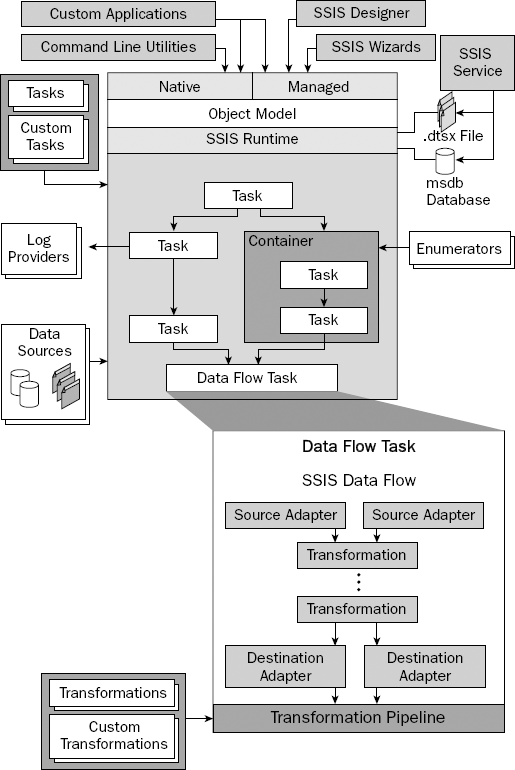1.2. Architecture
SQL Server 2005 has truly evolved SSIS into a major player in the extraction, transformation, and loading (ETL) market. It was a complete code rewrite from SQL Server 2000 DTS. What's especially nice about SSIS is its price tag, which is free with the purchase of SQL Server. Other ETL tools can cost hundreds of thousands of dollars based on how you scale the software. The SSIS architecture has also expanded dramatically, as you can see in Figure 1-3. The SSIS architecture consists of four main components:
The SSIS Service
The SSIS runtime engine and the runtime executables
The SSIS data flow engine and the data flow components
The SSIS clients
Figure 1.3. Figure 1-3

The SSIS Service handles the operational aspects of SSIS. It is a Windows service that is installed when you install the SSIS component of SQL Server 2005, and it tracks the execution of packages (a collection of work items) and helps with the storage of the packages. Don't worry; you'll learn more about what packages are momentarily. The SSIS Service is turned off by default and is set to disabled. It only turns on when a package is executed for the first time. You don't need the SSIS service to run SSIS packages, but if the service is stopped, all the SSIS packages that are currently running will in turn stop.
The SSIS runtime engine and its complementary programs actually run your SSIS packages. ...
Get Professional SQL Server™ 2005 Integration Services now with the O’Reilly learning platform.
O’Reilly members experience books, live events, courses curated by job role, and more from O’Reilly and nearly 200 top publishers.

